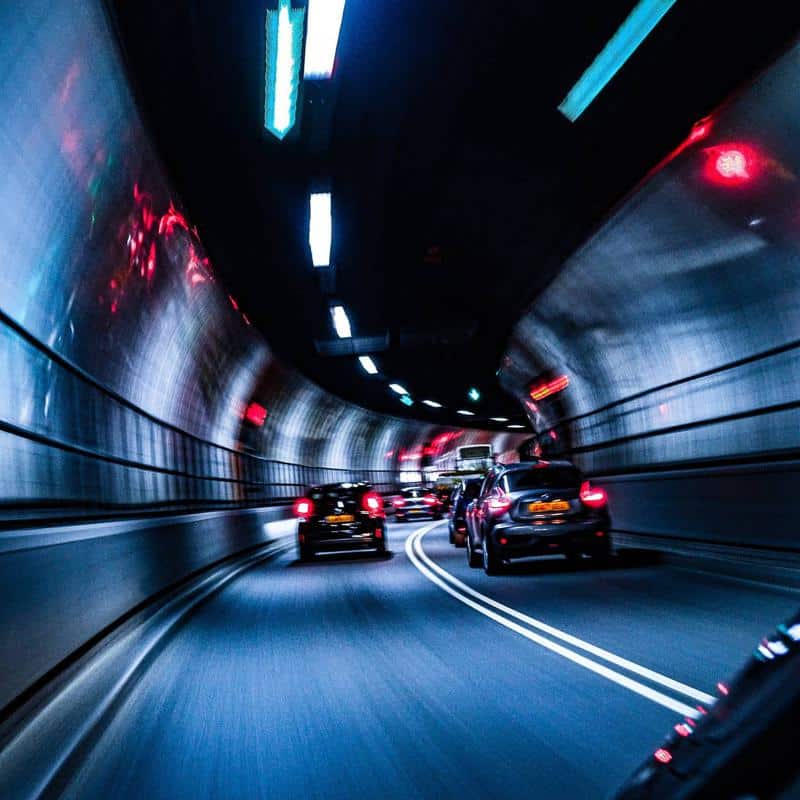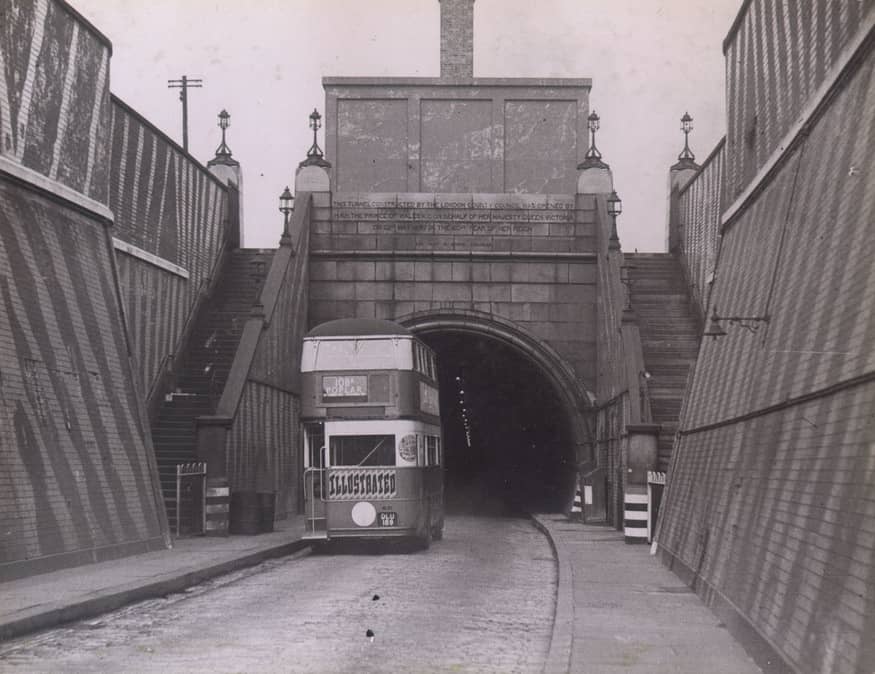The Blackwall Tunnel is a road tunnel in East London, England, running beneath the River Thames. The tunnel has been open for years and is today an important part for thousands of drivers daily.
This is the ultimate guide to the Blackwall Tunnel in London with all the information you need, from the opening times to the history to the different restrictions and more.
What is the Blackwall Tunnel in London?

The Blackwall Tunnel is a road tunnel underneath the River Thames in East London, actually made of 2 separate tunnels – one for the traffic coming from the north and the other one for the south.
It connects the Greenwich Peninsula and the Isle of Dogs in the south with Tower Hamlets and the Docklands in the north.
The tunnel was designed as a means of improving commerce and trade around East London and was opened in 1897 by the Prince of Wales. The first tunnel was originally built for horse-drawn vehicles, but because of congestion, it was later converted for use by motor vehicles when the second tunnel was opened in 1967.
Although there have been several failed attempts to construct another river crossing east of the Blackwall Tunnel, it remains the farthest easterly free road crossing on the Thames. The only crossings farther east are the Dartford Crossing (toll) and the Woolwich Ferry.
Where is the Blackwall Tunnel in London?
The Blackwall Tunnel connects Poplar in the north to North Greenwich and the Kent-bound A2 in the south via East London underneath the River Thames.
The Tunnel is part of the A102 and passes underneath the O2 (formerly known as the Millennium Dome) while travelling downstream from the north.
Check this video: Driving from the London Blackwall Tunnel northern approach to Blackwall Tunnel southern approach.
Can Pedestrians Use the Blackwall Tunnel?
Since May 1969, pedestrians have been banned from using the two tunnels, and only motor vehicles are allowed. The decision to ban pedestrians was made for safety reasons, as the tunnels are narrow, and congestion can quickly build up during peak hours.
Can Cyclists Use the Blackwall Tunnel?
No, cyclists are not permitted inside the Blackwall tunnel; however, they are allowed in the Rotherhithe tunnel.
The Height Restriction at the Blackwall Tunnel
Before making your journey through the Blackwall Tunnel, you should ensure that your vehicle can safely navigate the tunnel. The height restriction in the Blackwall tunnel for northbound traffic is 4m (13’0″), and southbound traffic is 4.7m (15’6″).
It’s worth noting that a fixed fine of £60 and three points on the licence will be sent to drivers ignoring this height limit.
The Speed Limit in the Blackwall Tunnel
The speed limit in the Blackwall Tunnel is set at 30mph or 48km/h in order to promote safety for everyone.
The tunnel is a popular route for both local commuters and long-distance travelers, and the lower speed limit helps to reduce the risk of accidents. In addition, the tunnel is well-lit and has a smooth road surface. However, the reduced speed limit also makes the tunnel more congested during peak hours, so you should plan your journey accordingly.
Is the Blackwall Tunnel Free?
There is currently no toll for using the Blackwall Tunnel in London. That being said, you should pay attention and not get confused with the Dartford Crossing, which does require a fee to use it (called the Dart Charge).
Blackwall Tunnel London Opening Times
The tunnel is open and operative 24 hours, 7 days a week, unless it closes for a crash, a fire, or other incidents. While it is officially always open, the tunnels are sometimes closed for maintenance work and renovation, but that usually happens during the night or on the weekend.
Why is the Blackwall Tunnel Not Straight?
The Blackwall Tunnel in London is not straight for a number of reasons. First, the tunnel was built in the late 19th century, when engineering techniques were not as advanced as they are today. And the Blackwall Tunnel was made to align with Northumberland Wharf and Ordnance Wharf and avoid the sewers nearby.
Second, the tunnel is located beneath the River Thames, which means that it had to be built around a number of bends in the river.
Finally, the Blackwall Tunnel is curved since most of the users were travelling with horses and carts when it first opened. The tunnel was made curved for the horses to avoid seeing the daylight at the end and speeding to get out.
As a result of these factors, the Blackwall Tunnel is not straight. However, it is still an essential part of London’s transportation infrastructure.
History of the Blackwall Tunnel

The history of the Blackwall Tunnel in London began in August 1887 when a proposal was put forward to build it beneath the Thames.
Blackwall Tunnel’s cost was £1.4 million, and the first tunnel was originally opened by the then Prince of Wales King Edward VII and Princess Alexandra on the 22nd of May 1897.
It was seen as a relief for commerce and trade as there was a road link between the Royal Borough of Greenwich and the Borough of Tower Hamlets.
The tunnel was so successful that it quickly became congested with constant traffic, and this became then a problem. And for this reason, the administration back then approved the construction of a second tunnel.
This second tunnel, the Rotherhithe Tunnel, was eventually opened but only in 1967.
In the meantime, pedestrians, which were back then allowed in the tunnel, were banned, and only cyclists were allowed in the Rotherhithe Tunnel.
Also Read:
Conclusion
The Blackwall Tunnel is a historic tunnel in London that has been serving the city’s transportation needs for over 100 years. The tunnel is not straight, but it still provides an important link between two boroughs in London.
This was everything you needed to know about the Blackwall Tunnel, from its history to the speed limit and height restrictions and more.